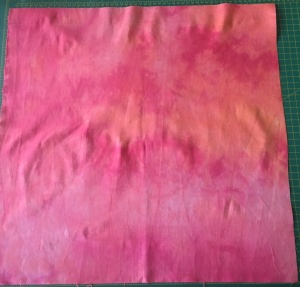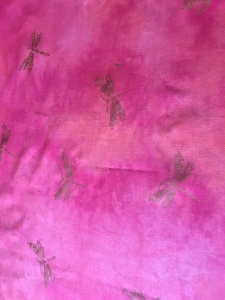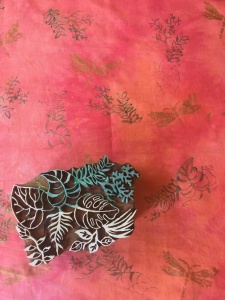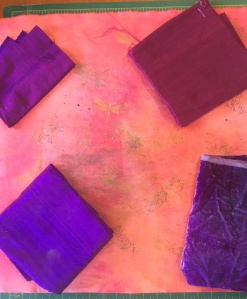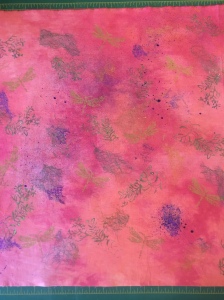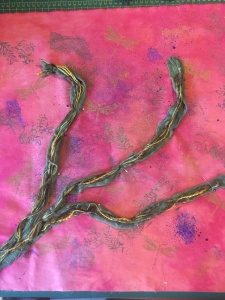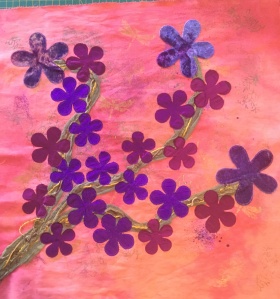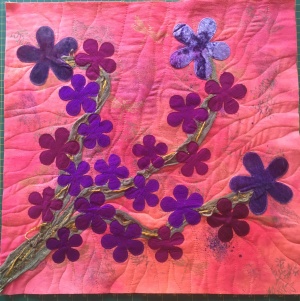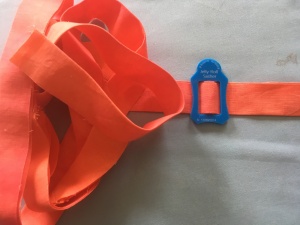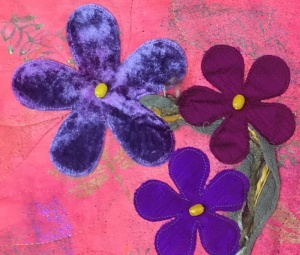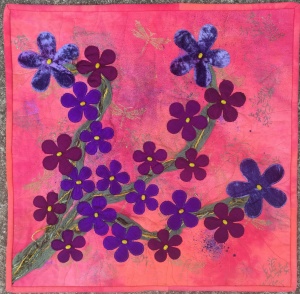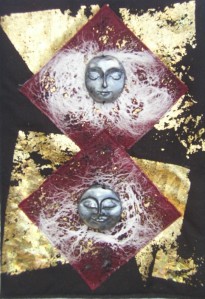It has been a long time since I used this blog but I have something to talk about so here we are again. I am teaching at Festival of Quilts in Houston again this year. It is always an honour to be included in the Houston faculty. This year I got an email from the coordinator of the IQA silent auction asking for a small quilt to be included in the auction. After the initial shock of being asked, I got a bit of an idea of what I was going to do. Of course, I then went to Birmingham, got busy and have left it until the very last minute to put this quilt together. As it is now on its way to the US, I am able to share my process with you.
I knew immediately the colourway I wanted to work with and it all started with a metre piece of handdyed linen. This one to be precise:
I then followed my general process for many of the quilts I make.
I selected some hand dyed velvet, silk dupioni, cotton scrim and some wool and acrylic yarn for highlights.
Then I set about to create texture in the background with paint and a few other bits and pieces.
I used Lumiere paints because they are the best. First I used a stencil to add the dragonflies. This stencil is one of my absolute favourites and I reach for it often, or pretty much all the time. I then used a block print to add some ‘greenery’.
When I auditioned my fabrics on the painted surface, I needed more depth and a bridging colour.
So, I added some depth by misting diluted purple Dye Na Flow in the centre of the piece. Next came some painted Mistyfuse and off course, some foils.
Here is the finished painted surface
Next I used the cotton scrim and yarns to create the framework of the piece; the stems of my plants.
I cut my flowers on a Sizzex. This shape is a regular of mine as I really like both the range of sizes I have but the rounded symmetry this shape creates. I have flowers in three different sizes. The largest are in my hand dyed velvet. Then I cut three different silk dupioni fabrics in the two smaller sizes. I always cut more than I need as I select them randomly. Nature is very arbitrary and random, so by letting chance select my flowers, I have a better chance of it looking organic.
I stitch around the edges of all my applique with a simple straight stitch. A more traditional blanket stitch would not suit the aesthetic of most of my work. And I don’t want the stitching to dominate. If I want a stronger line, I will do a machine satin stitch, but I don’t do that often.
My label was printed on cotton and adhered to the backing and I was on the home stretch. Then came the quilting.
I used the 2.5 inch Jelly Roll sasher from Paulines Quilters World for my binding. The linen has more stretch than a standard patchwork cotton so it was a bit more temperamental to run through the sasher than cotton would have been, but this process is quick and easy and fool proof.
With the binding and hanging sleeve stitched down. I finished off by adding bright yellow, opaque beads. I use a LOT of complementary colourways for the pop and this quilt was no exception. Over all the piece is bright, warm and spring-like. I hope it raises some money for the IQA in the silent auction.
